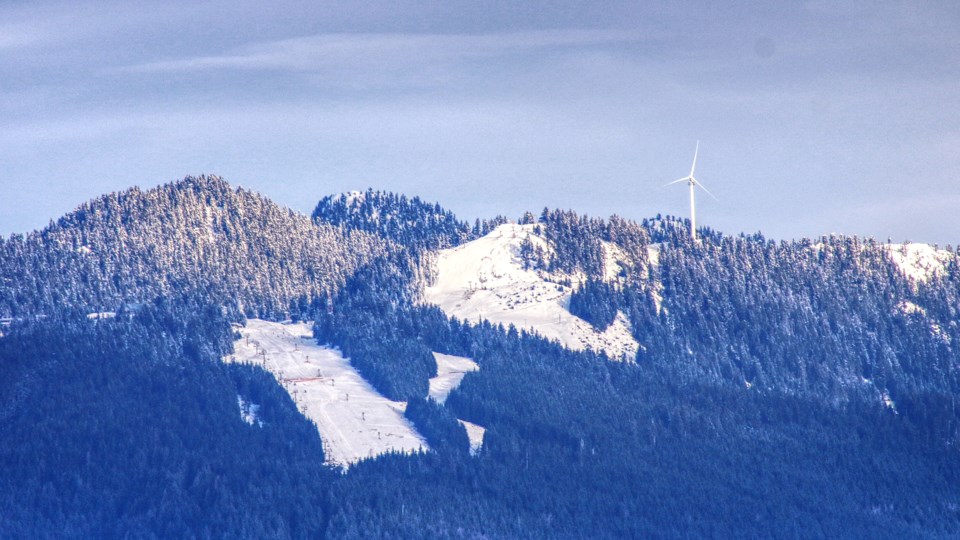Several ski resorts in B.C. are thriving despite a delayed La Niña, which was expected to bring cooler temperatures and greater precipitation to mountains throughout the province.
The National Oceanic and Atmospheric Administration (NOAA) confirmed on January 9 that La Niña’s wetter weather pattern has arrived, but warned that it will be weaker than expected—disappointing news for ski resorts that had hoped to capitalize on pent up demand after the country’s hottest winter ever recorded, during the 2023-24 ski season.
The Big White Ski Resort in Kelowna had a below-average season that year, according to senior vice-president of marketing and sales Michael Ballingall.
“Everyone’s expecting a much better year this year,” he told BIV back in November.
That month, Big White opened its doors a week early to visitors for the season, with a snow base of 103 centimetres and 2,500 visitors—one of the best in its history.
Despite online average snowfall, the resort is doing well.
Visitor numbers are up by 50 per cent year-to-date due to more locals making more-frequent visits due to built-up demand, Ballingall said. Most visitors are season-pass holders.
Over Christmas and New Year’s, ski visits were up by 31 per cent over the same period in 2023.
Currently, Big White has an approximately 152-centimetre base, which is predicted to rise to 200 centimetres by the end of January, said Ballingall.
“That resulted in every one of our divisions being up,” he said. “All the different items that make up the resort have had an extremely good Christmas and New Year season.”
Currently, the resort is 75 and 80 per cent occupied by Australian and New Zealand nationals and has seen around a four-per-cent increase in visits from these countries.
Higher flight costs across the Pacific is one reason for why visits haven’t grown more, said Ballingall, who added that Japan offers a ski alternative.
Big White has seen a 54-per-cent year-to-date increase in visits from the U.S., mainly due to the favourable exchange rate and direct flights to Kelowna from Los Angeles—and soon Seattle.
Big White’s biggest market, however, remains the Lower Mainland.
“We are really happy. The business is great,” Ballingall said.
Still, the resort has encountered some challenges when it comes to finding and managing seasonal staff, 900 of which are currently employed at the resort.
Another resort looking forward to greater snowfall this year was Troll Ski Resort in Quesnel, which took a substantial blow from warm winter temperatures last season, when it was forced to cancel mountain sports at the B.C. Winter Games.
Last season, the resort only operated for 42 days, compared to its usual operating span of 80 to 100. That, and losing part of its high-volume days like Christmas, had a huge impact on sales, said owner Hildur Sinclair.
This season, though, Sinclair says visitor numbers have been excellent despite a mild winter and a noticeably weaker La Niña compared to what was predicted.
Over the holidays, the resort was working with just under a metre of snow—half of its typical snow pack.
The resort relies purely on naturally made snow due to power constraints, and although conditions have been warmer than usual, the resort benefits from its northern location.
“[Skiers are] coming out anyway,” said Sinclair.
Around 95 per cent of Troll’s client base come from Quesnel, but the resort also serves the communities of Williams Lake and Prince George.
Other driving forces this season include school programs and more people choosing to ski for their mental and physical well-being.
Whistler Blackcomb COO Belinda Trembath says the resort’s success so far this season has been driven by early snowfall through November, both at altitude and in base areas.
Combined with snow-making capabilities, the resort has been able offer top-to-bottom skiing through the holiday period and into January.
Two months into the season, Whistler has had around 500 centimetres of snowfall, which is half their annual average of about 10 metres.
“We normally operate well into May on one of our mountains, and we’re looking to do that,” Trembath said.
Additionally, the resort has not experienced any significant rain events, which are common when operating on the coast and can sometimes set the resort back.
“We’ve been very fortunate to have good snowfall, and in between, relatively dry and cold conditions,” said Trembath. “Overall, we’ve had a challenge-free winter.”
By contrast, La Niña’s delay is more noticeably affecting conditions at Grouse Mountain.
In an email, director of marketing Adam Rootman told BIV that the mountain hasn’t yet experienced the snowfall or colder temperatures needed for ideal snowmaking conditions, and is therefore not being able to open as much terrain as they had hoped.
“However, history reminds us that Mother Nature is unpredictable,” he wrote. “We have a long season, and we remain optimistic and excited about what’s ahead.”
As soon as conditions are right, snowmaking crews will spring into action, added Rootman.
—With files from Stefan Labbé, Glen Korstrom and Elana Shepert




